IndyStar
May 26, 2016
The legend of the notoriously deadly Jungle Park Speedway
Contacts:
Will Higgins: http://www.indystar.com/staff/6579/will-higgins/
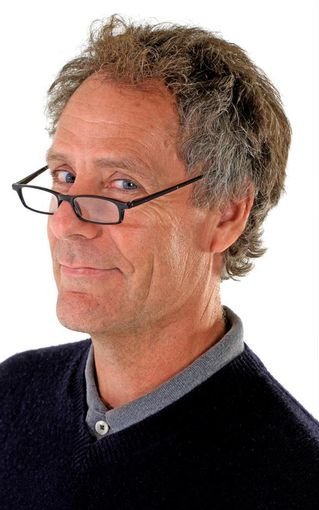
Michelle Pemberton: http://www.indystar.com/staff/7049/michelle-pemberton/
What’s the deal with the boots?
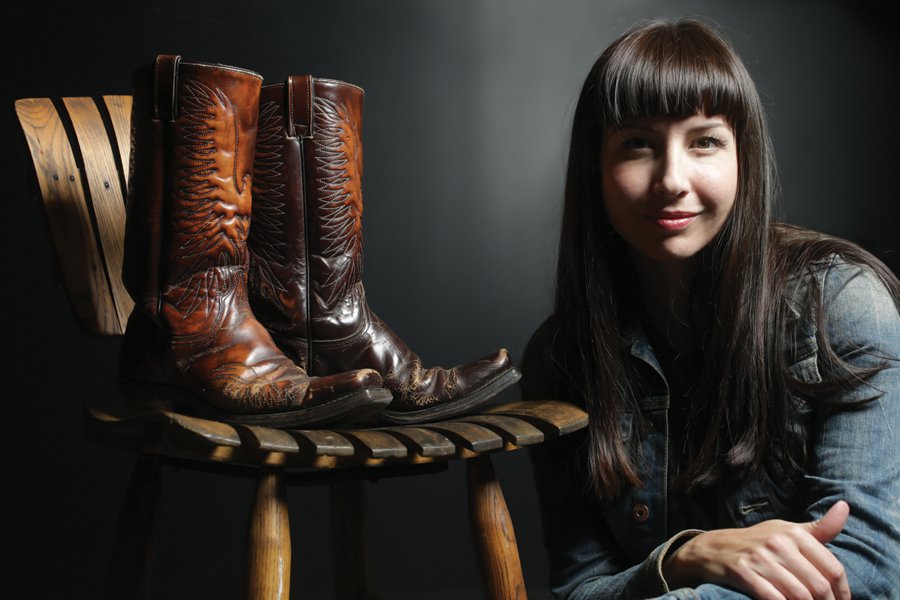
Michelle Pemberton
VIDEO:
IndyStar reporter Will Higgins and photographer Michelle Pemberton explore the ruins of the historic Jungle Park Speedway. Michelle Pemberton/IndyStar
People drank beer, long necks. One car went off the track and flipped and caught fire. Back then they didn’t have much safety equipment, and people ran to put out the fire with beer.
An hour west of Indianapolis, in the middle of sparsely populated Parke County, in some woods, is an unexpected thing: a grandstand.
Not bleachers. A grandstand. A large, roofed-over affair with a seating capacity of more than 500. It’s made of wood, and it’s in an advanced state of dilapidation.
The grandstand looks out onto … nothing. Just a grassy field surrounded by forest. Except that if you spend a moment looking at the grassy field, not closely but broadly, you begin to get the picture: It’s not so much a field as a corridor, and the corridor bends. And the outside of the bend is raised. It seems to follow a ridge, a bowl-shaped ridge.
But this ridge is too perfect, the bend too uniform. This thing was man-made.
This is not a ridge. It’s a high-banked turn.
This nothingness in the woods was a race track.
Jungle Park Speedway, a half-mile oval with a quarter-mile oval in its infield, was one of the premier speedways in the Midwest in the early 20th century. It was a proving ground for some of the top American race drivers. Eight Jungle Park veterans went on to win the Indianapolis 500, including one of Indy’s all-time greats, Wilbur Shaw, who won the 500 in 1937, 1939 and 1940.
The track closed in 1960 after one more in a long line of horrific accidents. Nature has been reclaiming the grounds ever since. Sycamore trees stand 40 feet tall in the middle of the first turn. Honeysuckle grows thick in what once was the pits.
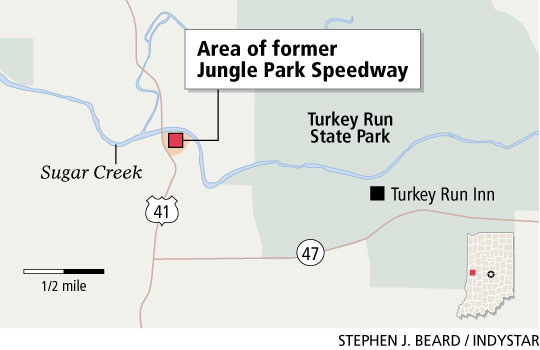
But the reclamation is not yet complete. In places, if you stab at the grass with the heel of your boot, you quickly reach the racing surface: in the early days dirt, and later a rough hewn combination of gravel and oil. The grandstand is the most obvious remnant. It was built in 1947. The track opened in 1926. Auto racing was in its infancy. Cars were in their infancy.
The other day in the grandstand a black buzzard, startled by the rare presence of people, clumped quickly and noisily along one of the aisles for about 20 yards then flew away into the woods.
It was fitting. Buzzards are death symbols. Jungle Park was bloody almost from the outset.
In the track’s second season race official Earl Parker was mowed down and killed by a speeding racer as he repaired a divot on the track. The following July a spectator was killed. Two signs of the times: The spectator was identified in IndyStar only as “Mrs. Charles Kiger,” and just one paragraph was devoted to her death, thethird paragraph in a story chiefly about the day’s racing results (headline: “Bauman is first in three races”).
Two months later Jungle Park lost its first driver: Walter Ax. The following year another spectator, Gilbert Cox, was knocked unconscious when a race car flew into a fence post causing the fence post to fly into him. Three more drivers would die at Jungle Park over the next two years, including Edward Leeper, whose car, IndyStar reported, “left the track and threw Leeper against a tree, crushing his skull.”
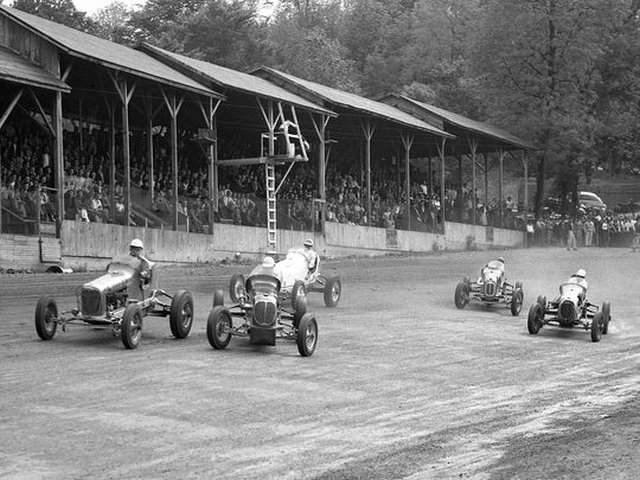
In 1942 cars speed past the spectator stands. (Photo: Photo by Bob Sheldon, courtesy of the Gene Crucean Collection.)
But at a time when seat belts were nonexistent and emergency medical care rudimentary, that was racing. Even Indianapolis Motor Speedway, a sophisticated, well-funded racing operation, had 22 fatalities in the 1930s, three of them spectators.
Still, Jungle Park’s casual approach to safety made it stand out. Most of the track didn’t have an outside retainer wall, so cars frequently went careening into the trees and even into nearby Sugar Creek.
The high-banked turns meant high speeds. “They’d get up to over 100 mph,” said Tom W. Williams, a retired engineer and racing fan who wrote the book “The Ghosts of Jungle Park.” “It was dangerous as all get out.”
Fans poured in. A small hotel, which later burned down, was built on the grounds. And there also was a restaurant made to look like a windmill, which remains today but is empty.
“Jungle Park got a reputation for being a very treacherous place,” said Dick Jordan, longtime publicity director for the United States Auto Club, who remembers very clearly being at Jungle Park on Sept. 28, 1952. He was 6. He can still see Ralph Scott losing control of his racer and crashing spectacularly, fatally. “That was part of the spectacle of auto racing, to try and cheat death, and to a certain extent it still is,” Jordan said. “I hate to think that’s the case, but there’s something to that.”
Jungle Park’s crowds on a good day hovered around 5,000. Some fans sat in the grandstand, but many more sat on a hill off the fourth turn or in the infield. Others gathered in the wooded hills outside the grounds and caught glimpses for free.
“It was rowdy and crowded,” said Robert Dicks, 72, a lifelong racing enthusiast. “I was like 4 or 5 years old. I remember the drinking was heavy. So we’re standing at the fence watching the race, and there’s a drunk sticking a firecracker in a guy’s shoe. And he lights it, and the guy is hopping around …
“People drank beer, long necks. One car went off the track on the back stretch and flipped and caught on fire, and back then they didn’t have much safety equipment, and people ran to put out the fire with their beer. I remember one drunk bought my brother a case of snow cones. How could you eat 24 snow cones?”
Jungle Park Speedway: Then and now, in 19 Photos
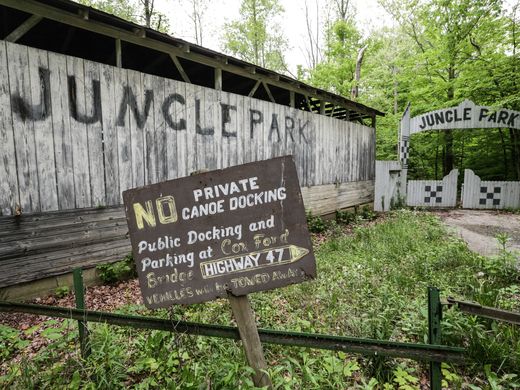
Wooden bleachers with a metal roof still stand next to the entrance to the now-closed Jungle Park Speedway. The 1/2 mile Jungle Park Speedway, on the banks of Sugar Creek near Turkey Run State Park in Parke County, opened in 1926 and operated on and off until closing in 1960.
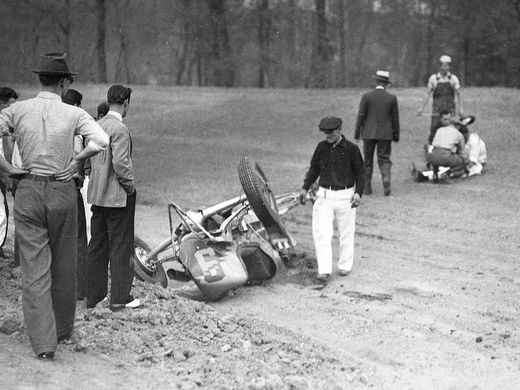
Henry Schlosser wreck at Jungle Park Speedway, May 7, 1939. Schlosser sits on track, his wrecked and overturned car is nearby but he was able to walk away. Photo by Bob Sheldon, courtesy of the Gene Crucean Collection.
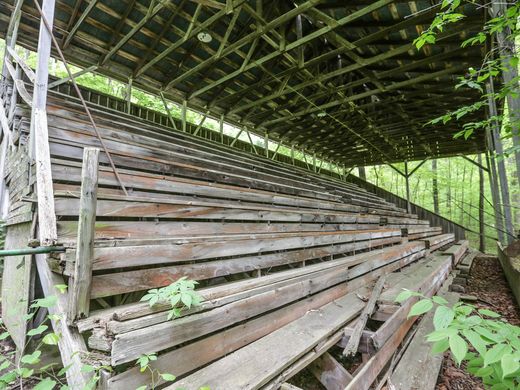
The woods seek to reclaim the area of the remaining wooden bleachers.
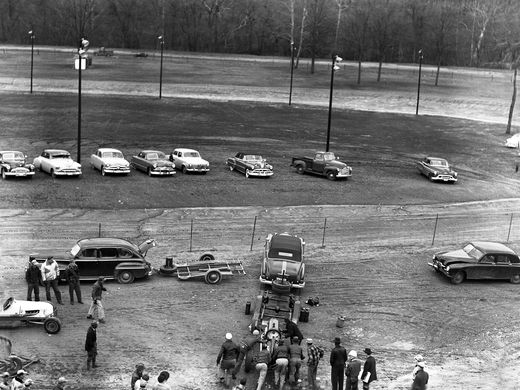
A shot of Jungle Park Speedway from high in the grandstands shows cars being unloaded in early 1952. Photo by Bob Sheldon, courtesy of the Gene Crucean Collection.
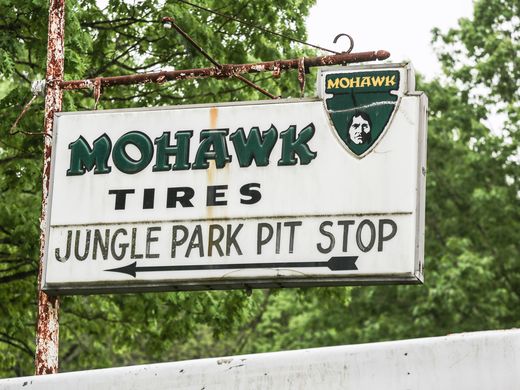
A sign remains at the former Jungle Park Pit Stop next to the now closed Jungle Park Speedway.
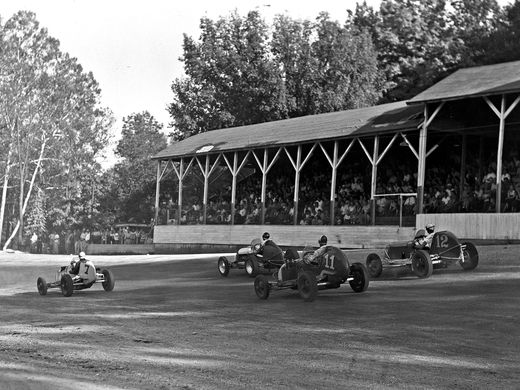
In 1952 cars speed past the spectator stands, which were right up against the track with only flimsy metal mesh protecting the fans. Photo by Bob Sheldon, courtesy of the Gene Crucean Collection.
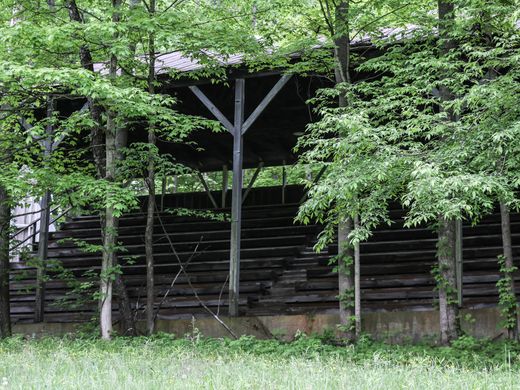
The remaining spectator stand peeks from the trees at the now-closed Jungle Park Speedway.
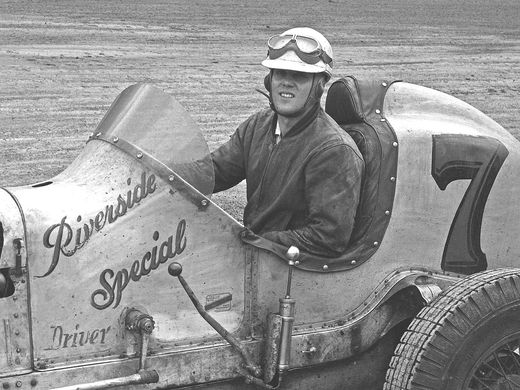
Edward “Bus” Wilbert from Indianapolis poses for a photo in his No. 7 Riverside Special. Bus was a WWII flying hero who was killed at another Indiana track in 1946. Photo by Bob Sheldon, courtesy of the Gene Crucean Collection.
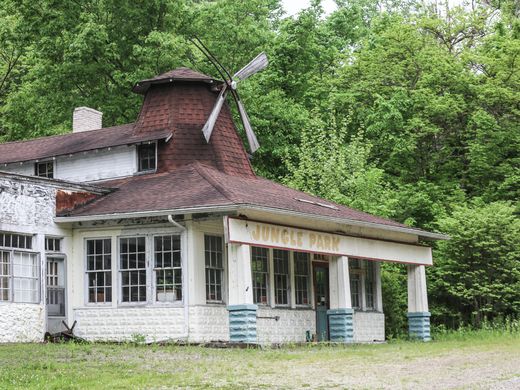
The former Jungle Park Pit Stop windmill building and former antique store is now closed next to the former Jungle Park Speedway.
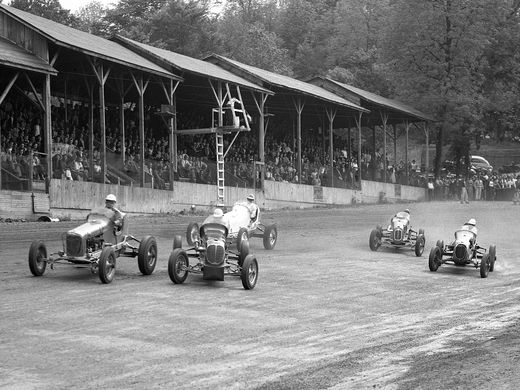
In 1942 cars speed past the spectator stands. Photo by Bob Sheldon, courtesy of the Gene Crucean Collection.
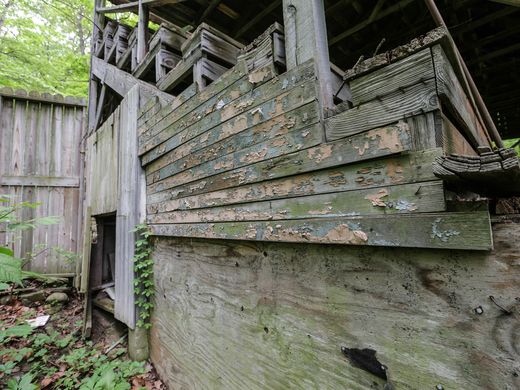
Falling structures harken to the race track’s past.
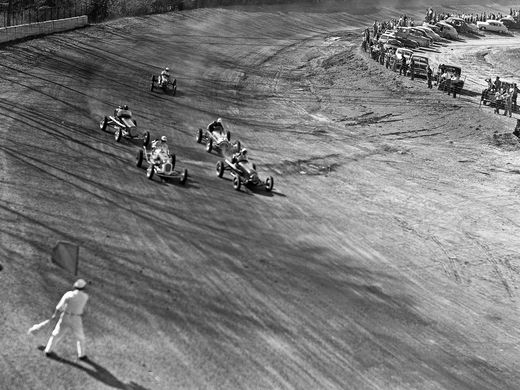
In 1952 the racers get the green flag at Jungle Park Speedway. Photo by Bob Sheldon, courtesy of the Gene Crucean Collection.
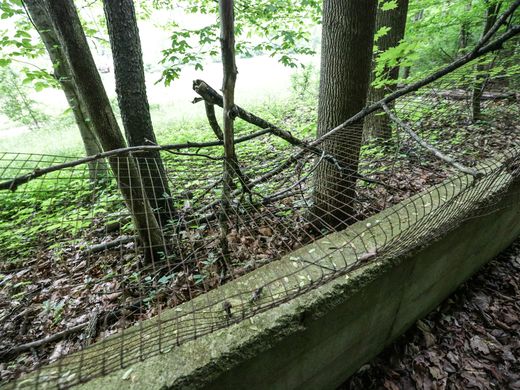
A flimsy metal screen was all that separated spectators from the nearby racing surface at Jungle Park Speedway.
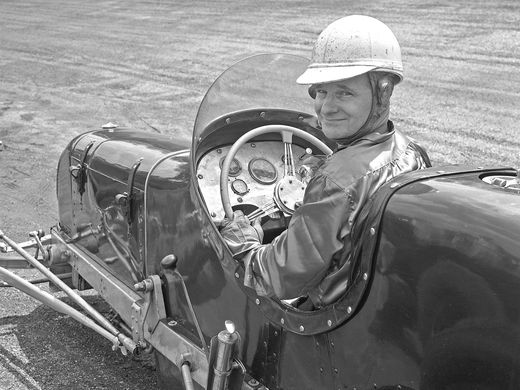
Nationally prominent driver Elbert “Pappy” Booker, shown at Jungle Park Speedway in 1942. Photo by Bob Sheldon, courtesy of the Gene Crucean Collection.
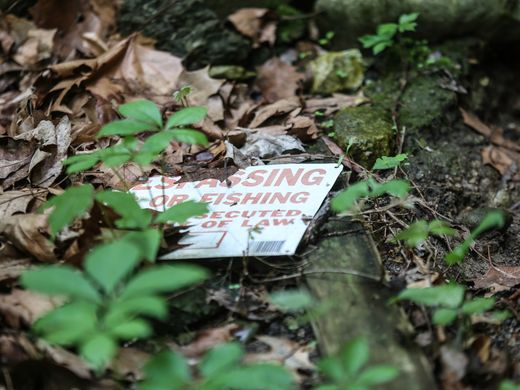
A broken sign warns trespassers to stay out.
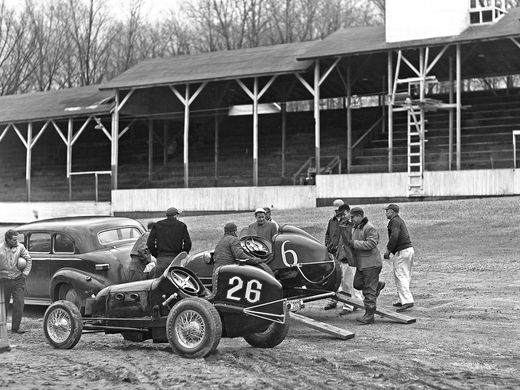
In 1952 cars are loaded on to trailers in front of the spectator stands. Photo by Bob Sheldon, courtesy of the Gene Crucean Collection.
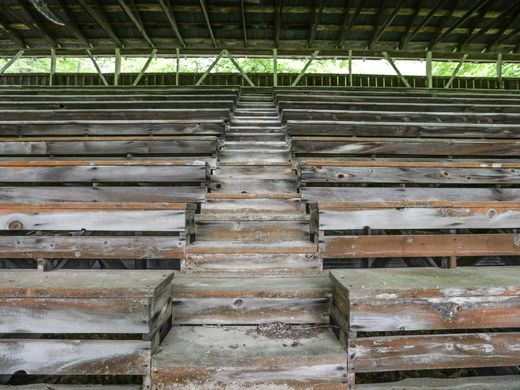
Wooden bleachers with a metal roof still stand.
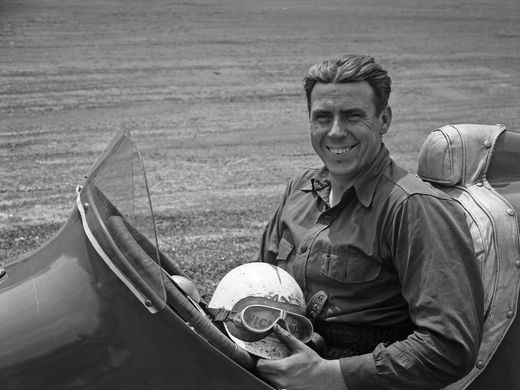
Popular race car driver James “Chick” Smith from Louisville poses for a photo at Jungle Park Speedway in Indiana. Photo by Bob Sheldon, courtesy of the Gene Crucean Collection.
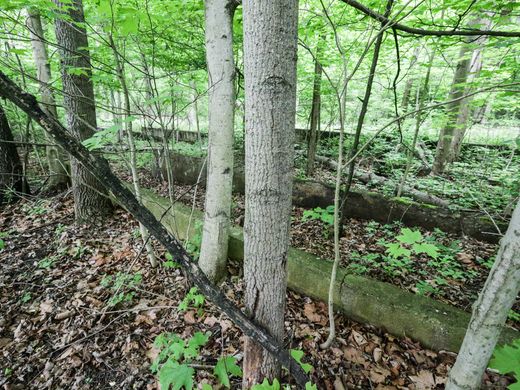
A concrete foundation is all that remains of a building next to the remaining spectator stands.
Original Pop-Up: http://www.indystar.com/story/life/2016/05/25/legend-notoriously-deadly-jungle-park-speedway/83040816/